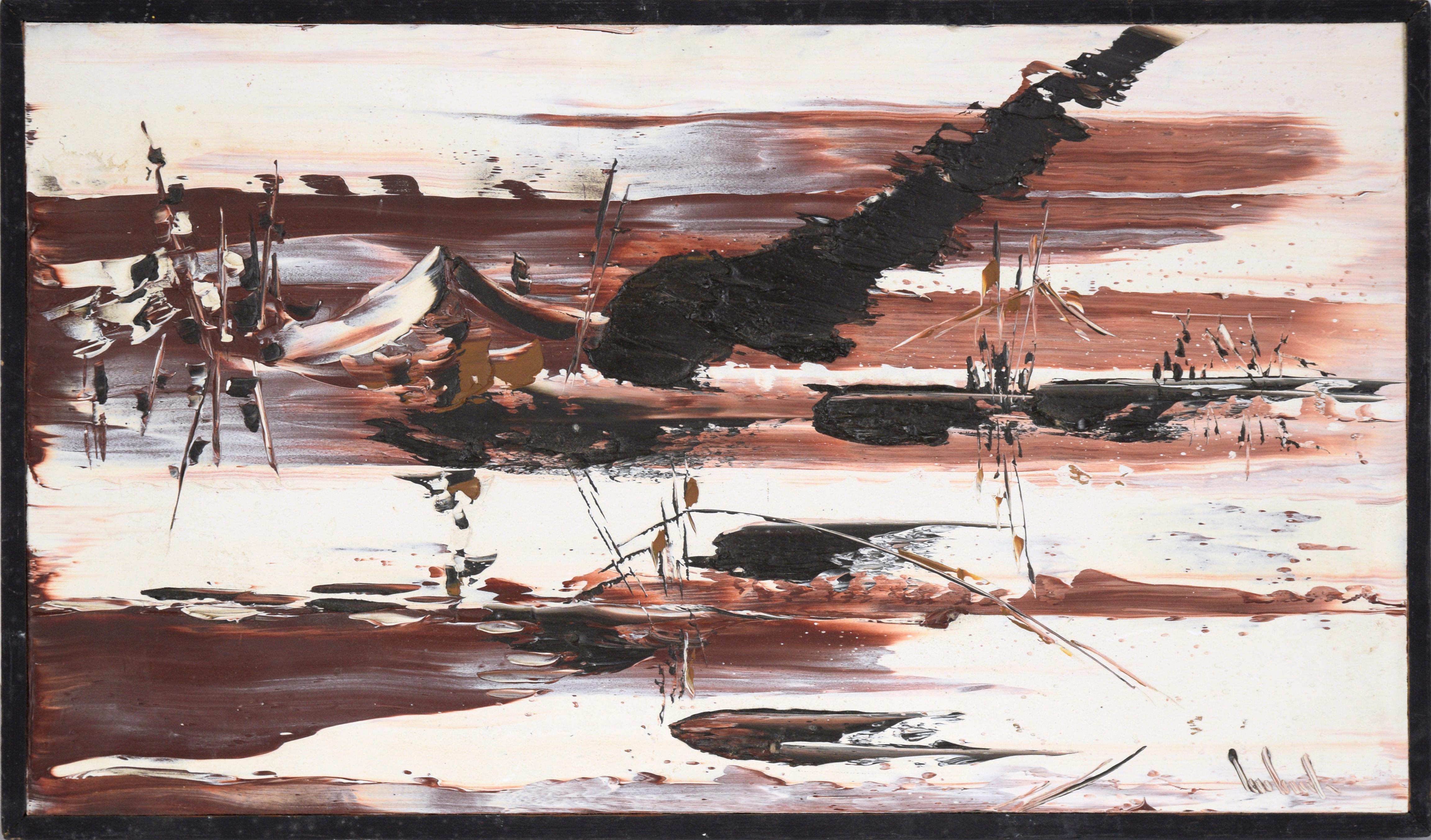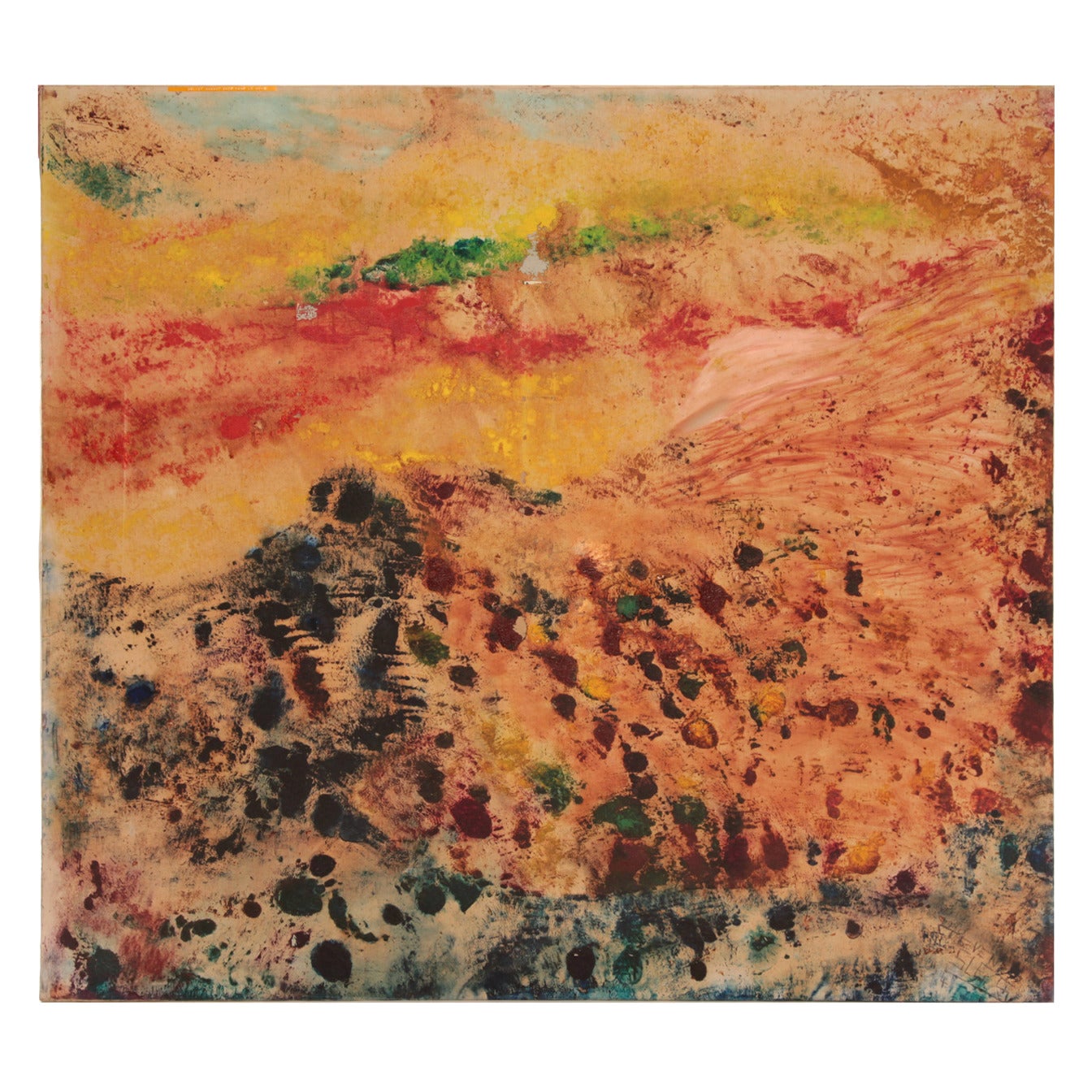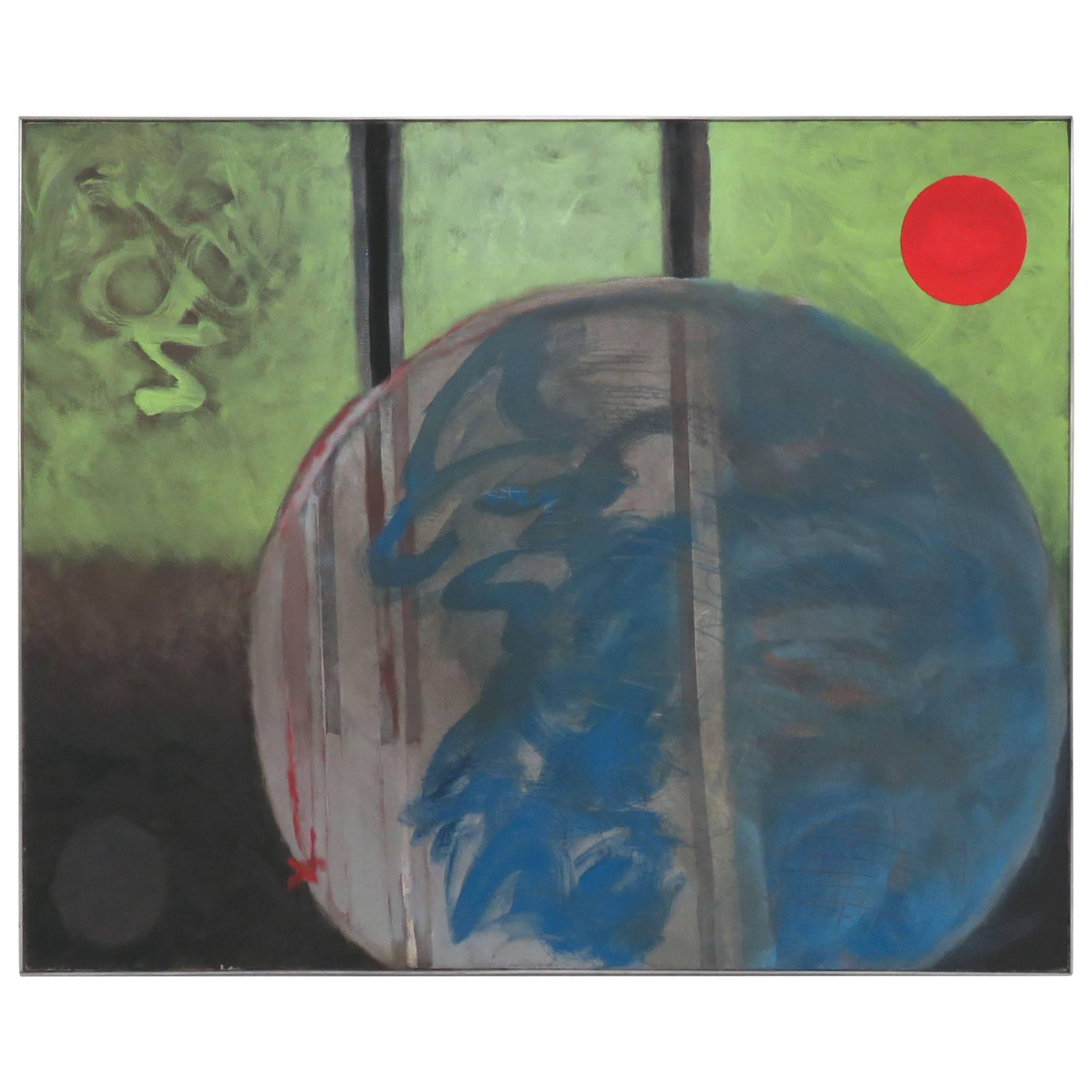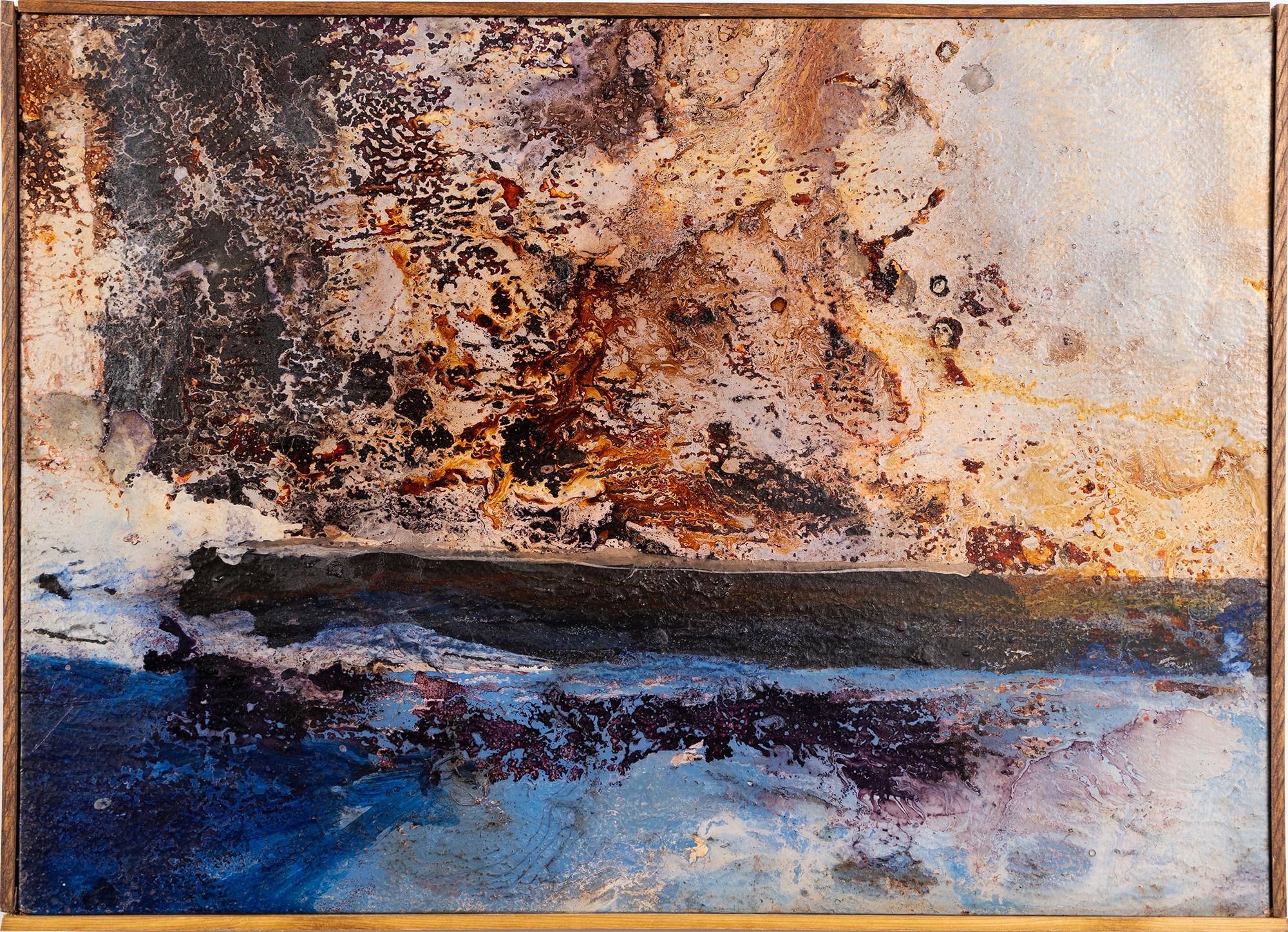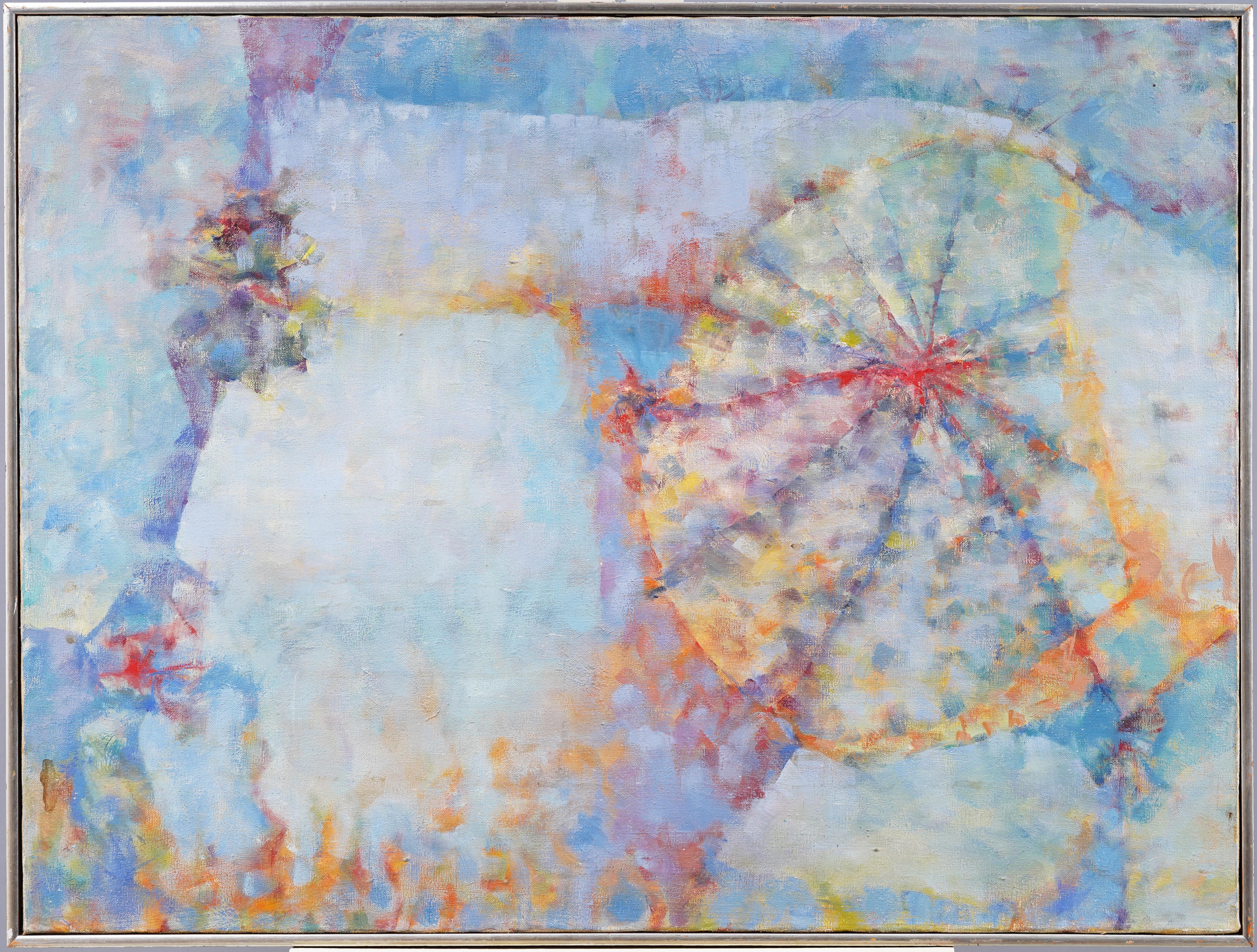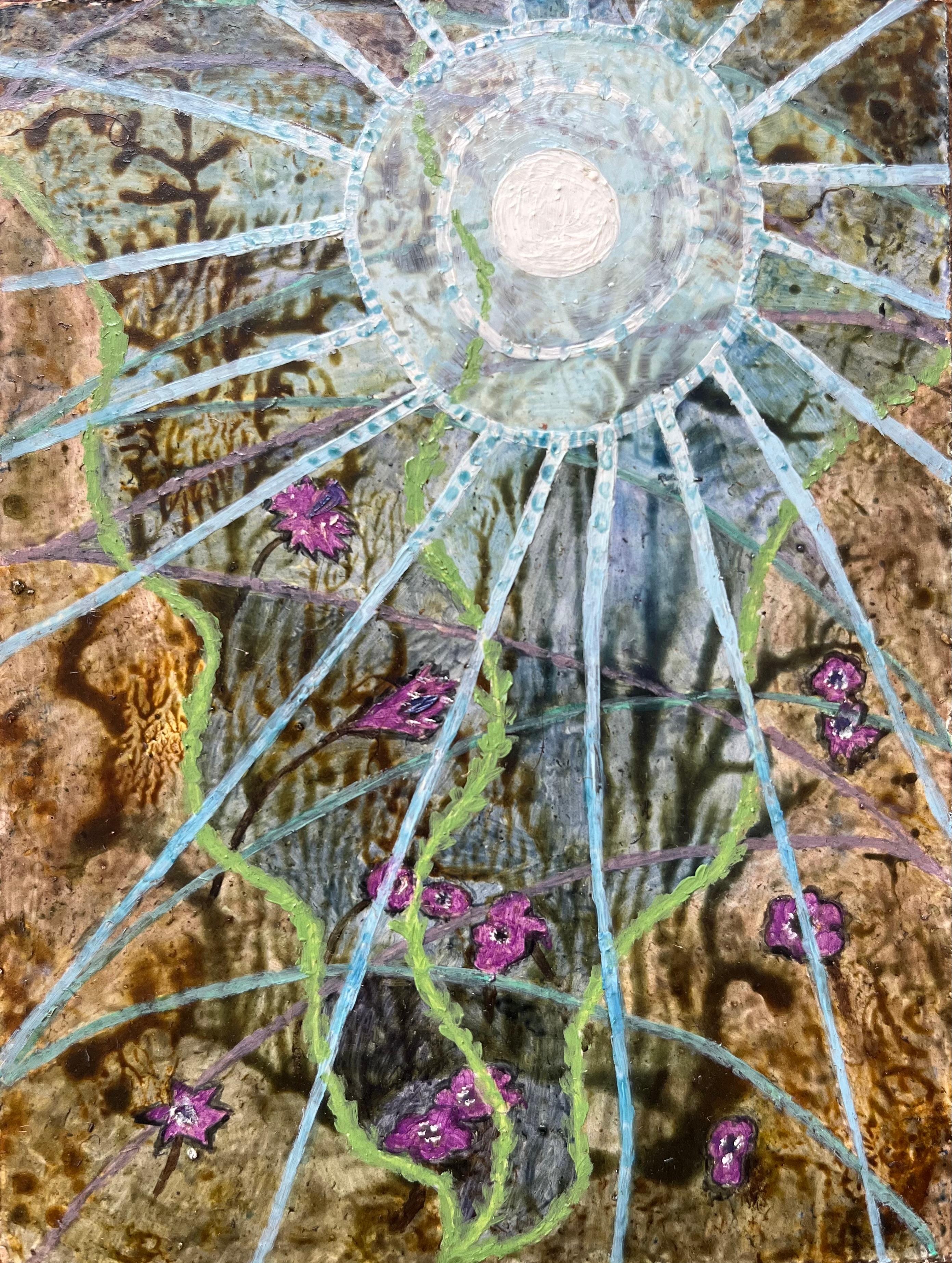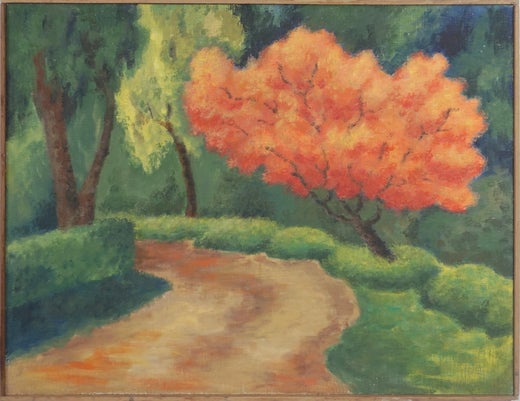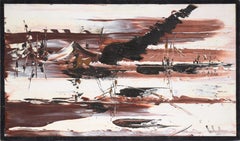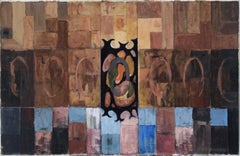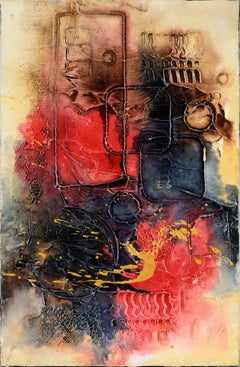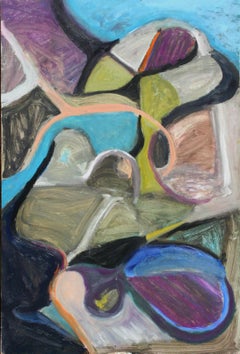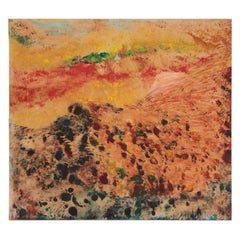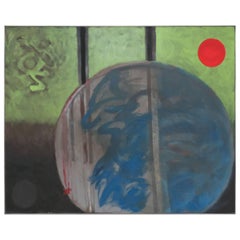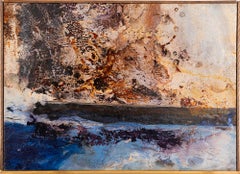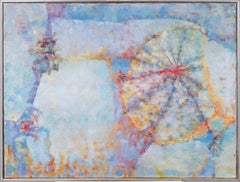Items Similar to Mid Century Celestial Reflection Landscape in Oil on Masonite
Want more images or videos?
Request additional images or videos from the seller
1 of 10
Eleanor PerryMid Century Celestial Reflection Landscape in Oil on Masonite1968
1968
$1,397.50
$2,15035% Off
£1,050.17
£1,615.6535% Off
€1,217.96
€1,873.7935% Off
CA$1,961.88
CA$3,018.2835% Off
A$2,177
A$3,349.2335% Off
CHF 1,148.31
CHF 1,766.6435% Off
MX$26,576.52
MX$40,886.9535% Off
NOK 14,528.42
NOK 22,351.4135% Off
SEK 13,607.04
SEK 20,933.9035% Off
DKK 9,089.42
DKK 13,983.7235% Off
About the Item
Mid Century Celestial Reflection Landscape in Oil on Masonite
Celestial reflection, a bold abstract expressionist painting by San Francisco, California artist Eleanor Perry (American, 1928-2014). Eleanor was a member and exhibited at the California Art Club in 1955; listed in Artists in California 1786-1940 by Edan Hughes.
Signed "Eleanor Perry" and dated "1968" on verso.
Unframed.
Image size, 22"H x 28"L.
- Creator:Eleanor Perry (1928 - 2014, American)
- Creation Year:1968
- Dimensions:Height: 22 in (55.88 cm)Width: 28 in (71.12 cm)Depth: 1 in (2.54 cm)
- Medium:
- Movement & Style:
- Period:
- Condition:Very Good; minor wear to edges.
- Gallery Location:Soquel, CA
- Reference Number:Seller: JT-SJ2266*1stDibs: LU54215322722
Eleanor Perry
Eleanor Perry (American, 1903-1996) was a San Francisco and Monterey artist, Exhibited California Art Club; listed in Artists in California 1786-1940 by Edan Hughes. Graduated from the University of California at Berkeley in 1923.
About the Seller
5.0
Platinum Seller
Premium sellers with a 4.7+ rating and 24-hour response times
Established in 1986
1stDibs seller since 2014
2,976 sales on 1stDibs
Typical response time: <1 hour
- ShippingRetrieving quote...Shipping from: Soquel, CA
- Return Policy
Authenticity Guarantee
In the unlikely event there’s an issue with an item’s authenticity, contact us within 1 year for a full refund. DetailsMoney-Back Guarantee
If your item is not as described, is damaged in transit, or does not arrive, contact us within 7 days for a full refund. Details24-Hour Cancellation
You have a 24-hour grace period in which to reconsider your purchase, with no questions asked.Vetted Professional Sellers
Our world-class sellers must adhere to strict standards for service and quality, maintaining the integrity of our listings.Price-Match Guarantee
If you find that a seller listed the same item for a lower price elsewhere, we’ll match it.Trusted Global Delivery
Our best-in-class carrier network provides specialized shipping options worldwide, including custom delivery.More From This Seller
View AllMid Century Modern Abstracted Landscape in Oil on Masonite
Located in Soquel, CA
Mid Century Modern Abstracted Landscape in Oil on Masonite
Bold abstracted landscape by Ray Oakvick (American, 1917-1993). Streaks of reddish brown and white create an abstracted la...
Category
1960s Modern Landscape Paintings
Materials
Masonite, Oil
$600 Sale Price
20% Off
Abstract Geometric Composition with Biomorphic Object - Acrylic on Canvas
Located in Soquel, CA
Bold abstract composition by RH Barnard (American, 20th Century). The backdrop of this piece is composed of rectangular sections of brown, red, blue, and tan. In the center of the composition, there is a black object...
Category
Late 20th Century Abstract Geometric Abstract Paintings
Materials
Canvas, Masonite, Acrylic
Textured Abstract Expressionist Composition (I) in Acrylic on Board
Located in Soquel, CA
Textured Abstract Expressionist Composition in Acrylic on Board
Textured and detailed abstract composition by Loretta Burton Youngman (American, b. 1943). Red and charcoal blue patc...
Category
21st Century and Contemporary Abstract Expressionist Abstract Paintings
Materials
Plaster, Glaze, Acrylic
Mid Century Abstract Expressionist - Dreams
By Les Anderson
Located in Soquel, CA
Colorful mid century abstract expressionist painting by Les (Leslie Luverne) Anderson (American, 1928-2009). From the estate of Les Anderson in Monterey, California. Unframed. Titled...
Category
1960s Post-War Abstract Paintings
Materials
Masonite, Oil
$1,500 Sale Price
20% Off
Like a Comet - Nocturnal Sky in Oil on Masonite
By Eleanor Perry
Located in Soquel, CA
Like a Comet - Nocturnal Sky in Oil on Masonite
Surrealistic oil painting landscape of comet by listed San Francisco, California artist Eleanor Perry (American, 1928-2014). Signed ...
Category
1960s American Modern Abstract Paintings
Materials
Masonite, Oil
$1,397 Sale Price
35% Off
"The End of My Prayer in a Planetarium" Abstract
By Leslie Luverne Anderson
Located in Soquel, CA
A dynamic, abstract expressionist image by Les (Leslie Luverne) Anderson (American, 1928-2009). From the estate of Les Anderson in Monterey, California. Signed "Les Anderson" lower r...
Category
1960s Post-War Abstract Paintings
Materials
Masonite, Oil
$2,240 Sale Price
20% Off
You May Also Like
Abstract Steven Sles Midcentury Oil Painting on Linen
By Steven Sles
Located in Phoenix, AZ
Early Steven Sles oil on linen painting circa 1964. Sles was a mouth painter with very limited use of his hands. He was also a student of Hans Hoffman. This example has a wonderful l...
Category
Vintage 1960s American Mid-Century Modern Paintings
Materials
Linen
Large Abstract Oil Painting Titled "Silver Lining" by Polly Doyle, circa 1970s
By Pauline Doyle
Located in Peabody, MA
Large abstract oil painting on canvas titled "Silver Lining" by Polly ‘Pauline’ Doyle, circa 1970s.
Category
Vintage 1970s American Mid-Century Modern Paintings
Materials
Paint
Vintage Mid Century Modern Abstract Expressionist Ethereal Organic Oil Painting
By Piry Rame
Located in Buffalo, NY
Vintage abstract expressionist etherial oil painting by Piry Rame (1921 - 2001). Oil on canvas, circa 1960. Signed on verso. Image size, 21L x 16H. Housed in a period frame.
Category
1960s Abstract Expressionist Landscape Paintings
Materials
Canvas, Oil
Antique American School Modernist Abstract Framed Mid Century Oil Painting
Located in Buffalo, NY
Finely painted bright and brilliant modernist painting. Oil on canvas. Framed. No signature found.
Category
1960s Abstract Abstract Paintings
Materials
Canvas, Oil
$760 Sale Price
20% Off
1960's British Surrealist Oil Painting - 'Dreams Beneath the Moon' Abstract
By Elvic Steele
Located in Cirencester, Gloucestershire
Title: 1960's British Surrealist Oil Painting - 'Dreams Beneath the Moon' Abstract
Artist: Elvic Steele
Medium: Oil on board, unframed
Size: 6 height x 4.5 width
Condition: Good
Pro...
Category
Mid-20th Century Surrealist Abstract Paintings
Materials
Oil
1960's British Surrealist Oil Painting - "Leading Lights"
By Elvic Steele
Located in Cirencester, Gloucestershire
Title: 1960's British Surrealist Oil Painting - "Break Out"
Medium: Oil on board, unframed
Size: 3.25 height x 4.5 width
Condition: Good
Provenance: all the paintings we have by thi...
Category
Mid-20th Century Surrealist Abstract Paintings
Materials
Oil
More Ways To Browse
Paintings On Masonite Vintage
Vintage Celestial Art
Paintings By Perry
Oil Painting Perry
Eleanor Hughes
19th Century Mexican Oil Paintings
Aztec Painting
Finesse Originals Wall Art
Georgian Bay Art
Jupiter Painting
Kate Jackson
Kurt Schwitters
M Stuart
Maxs Kansas City
Bill Jackson
Cy Twombly Mixed Media
Jack Taylor
Jacques Coulais
